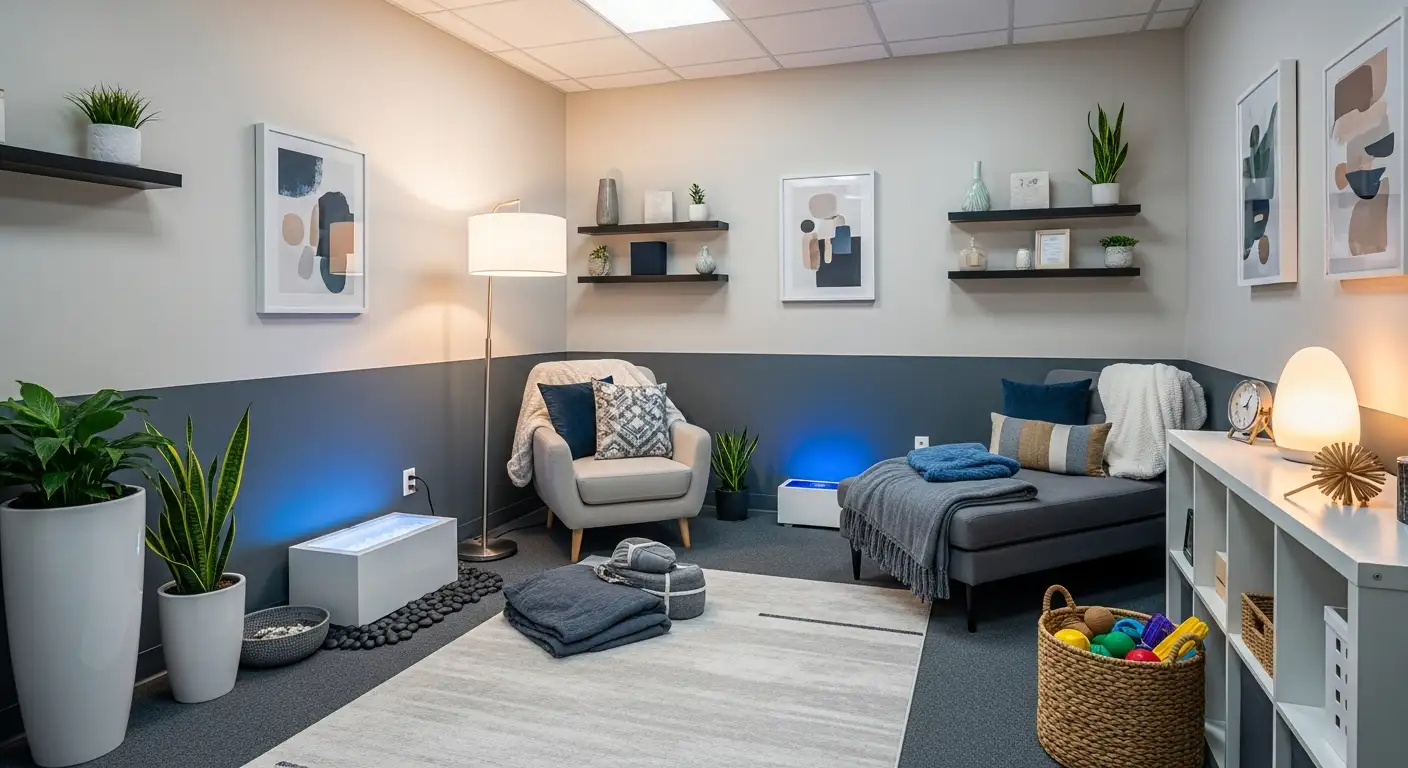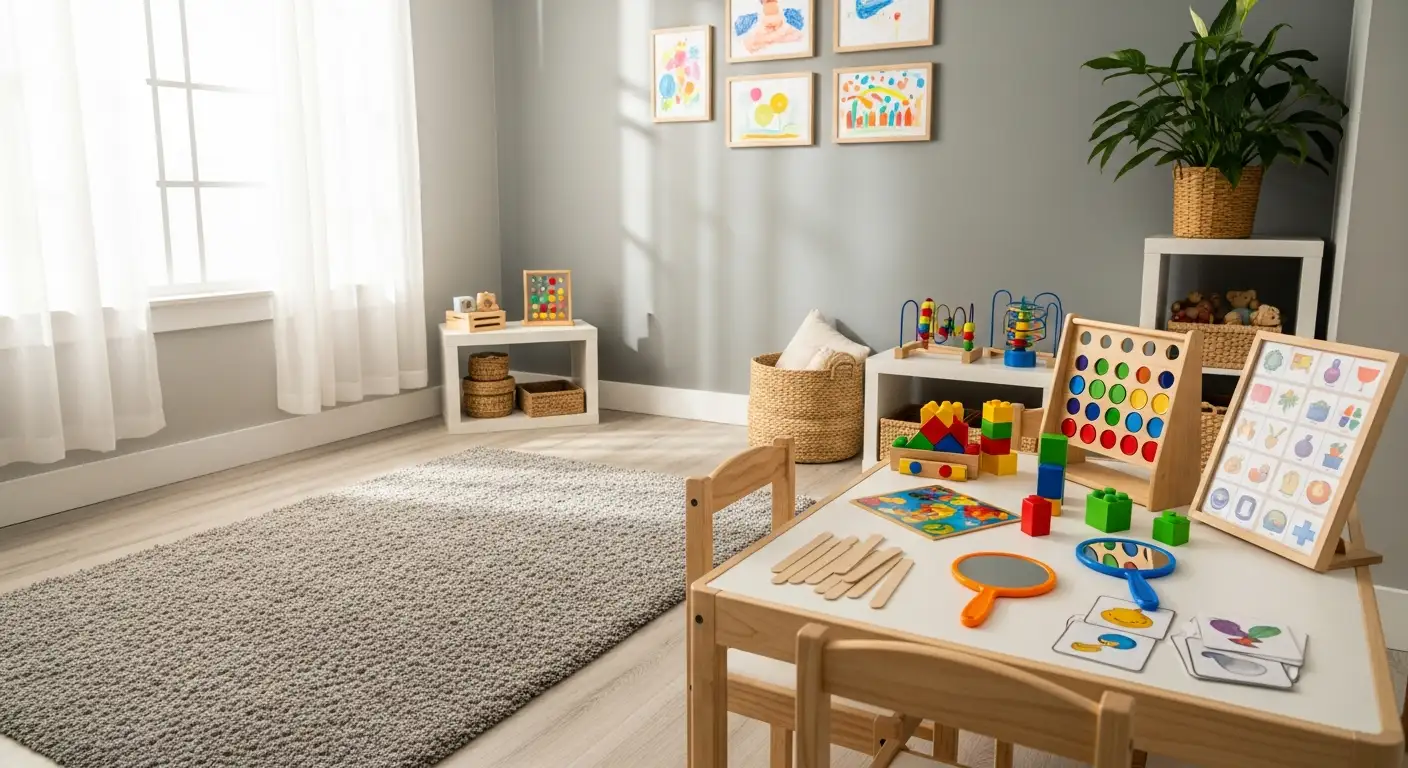Understanding ABA Therapy and Its Importance at Home
Applied Behavior Analysis (ABA) is a scientifically supported method for enhancing skills and reducing problematic behaviors in children with autism spectrum disorder (ASD). While traditionally administered by trained therapists, ABA techniques can be effectively implemented at home, empowering parents and caregivers to support their child's development continuously. This article explores practical strategies, tools, and resources for integrating ABA principles into daily routines, ensuring that children benefit from consistent, evidence-based interventions in familiar environments.
Core ABA Techniques for Home Implementation
What are some common ABA techniques used at home?
Many parents and caregivers incorporate several ABA strategies to support their child's development and manage behaviors effectively. These techniques are rooted in understanding behavior and the environment, making them adaptable to everyday scenarios.
One fundamental method is positive reinforcement. By offering praise, tokens, or access to preferred activities immediately after a desired behavior, children learn to repeat these behaviors. For example, praising a child for sitting nicely during a meal encourages them to maintain that behavior.
Prompting strategies are also widely used to teach new skills. Visual cues, such as picture cards or schedules, or verbal prompts like giving gentle reminders help guide children toward the correct action. When a child begins to understand and perform the task, prompts are gradually faded to promote independence.
Fading techniques play a vital role in transitioning children from dependence on prompts to performing skills on their own. For instance, initially providing physical guidance to help a child brush their teeth, then slowly reducing physical assistance until they can do it independently.
Breaking down complex activities into smaller, manageable steps—known as task analysis—makes learning more approachable. If teaching a child to dress, the task is divided into putting on a shirt, then buttons, then pants, and so forth.
Behavior chaining involves training children to perform a sequence of behaviors that make up a complex task. Each step is taught individually, then linked together, enabling children to complete entire routines, like handwashing or packing their school bag.
Additionally, video modeling and visual supports serve as powerful teaching tools. Showing videos of peers performing a skill helps children imitate behaviors in realistic contexts. These visual approaches are especially effective for children who learn best through seeing.
An essential component across all these techniques is diligent data collection. Tracking behaviors and progress allows parents to see what works, adjust strategies as needed, and share valuable information with professionals involved in the child's care.
By combining these ABA techniques at home—using praise, cues, task breakdowns, visual aids, and continual progress monitoring—parents can create a supportive environment that fosters learning and positive behavior change.
Setting Up the Home Environment for ABA Success

How can I implement ABA therapy at home?
Implementing ABA therapy at home involves using positive reinforcement strategies, such as verbal praise or tangible rewards, to encourage desired behaviors. It starts with clearly identifying the behaviors you want to promote, then consistently rewarding the child when these behaviors occur. Working alongside trained professionals can help tailor interventions and ensure strategies are effective.
Creating structured routines
A key aspect of ABA is establishing predictable routines for daily activities like meals, playtime, and bedtime. Consistent schedules help children know what to expect, reducing anxiety and promoting learning. Breaking down complex tasks into smaller steps also boosts confidence. For example, teaching a child to brush teeth can be segmented into rinsing, applying toothpaste, and brushing.
Making modifications to create a sensory-friendly environment
Many children with autism are sensitive to sensory stimuli. Making your home sensory-friendly can make a big difference. This includes controlling lighting (using soft or natural light), reducing clutter to minimize chaos, and employing noise-canceling tools or soft background music to manage sound sensitivities. Sensory diets—personalized plans that include calming activities, heavy work, or sensory breaks—can help children stay regulated.
Using visual supports and cues
Visual supports are vital in ABA at home. Visual schedules, picture cards, or timers help children understand routines and expectations. For instance, using images to show sequence steps in tasks like dressing or cleaning up makes instructions clearer and encourages independence. Technology supports such as apps or digital picture schedules further enhance understanding and engagement.
Managing the environment for better learning
Environmental management involves adapting the home setting to promote positive behaviors and reduce triggers. Keeping spaces organized and clutter-free minimizes distractions. Setting up designated areas for specific activities, like a quiet corner for calming or a play zone for learning, helps structure the day. Using visual or tactile cues can also guide the child’s behavior.
Implementing strategies at home
To execute ABA effectively at home, parents should incorporate positive reinforcement, structured routines, and sensory modifications into daily life. Consistency and patience are essential. Tracking progress through data collection helps evaluate what strategies work best.
Collaboration and support
Partnering with ABA professionals—like RBTs (Registered Behavior Technicians) and BCBAs (Board Certified Behavior Analysts)— ensures interventions are tailored and adaptive. Parents can also participate in training programs, learn new techniques, and share experiences with other families, creating a supportive network.
Practical activities for home
Activities like matching colors with household objects, identifying emotions from pictures, or play-based learning with familiar toys like puzzles, building blocks, or educational videos reinforce skills in familiar settings. These activities are enjoyable and promote vocabulary, social skills, and independence.
| Strategy | Purpose | Examples | Benefits |
|---|---|---|---|
| Structured routines | Promote predictability | Consistent meal and bedtime schedules | Reduce anxiety, enhance learning |
| Sensory-friendly modifications | Minimize sensory triggers | Control lighting, noise-canceling tools | Support sensory regulation |
| Visual supports | Clarify instructions | Picture schedules, flashcards | Increase understanding and independence |
| Environmental management | Create learning zones | Organized play areas, quiet corners | Reduce distractions and promote focus |
Adapting your home environment for ABA success involves thoughtful planning and collaboration with professionals. With consistent routines, sensory considerations, and visual supports, you can create a supportive space that encourages skill development and positive behaviors.
Utilizing Visual and Digital Supports

What are visual supports?
Visual supports are tools used to help children with autism understand and communicate more effectively by providing visual cues. These cues can take various forms such as pictures, symbols, or written words. Visual supports help children anticipate what will happen next, understand routines, and express their needs, making daily activities and transitions smoother.
How can videos and apps enhance learning?
Videos are particularly effective for visual learners, allowing children to watch and imitate desired behaviors in a controlled environment. Educational apps designed for children with autism can include interactive games, picture exchange communication systems (PECS), and communication boards, enabling children to practice skills at their own pace. Using technology fosters engagement and offers versatile ways to reinforce learning outside traditional settings.
What are social stories?
Social stories are short, personalized narratives that describe social situations and appropriate responses. They help children understand social norms and expectations, reduce anxiety, and teach new skills by illustrating step-by-step actions. For example, a social story about visiting the dentist can prepare a child for what to expect, encouraging cooperation.
How do visual schedules support daily routines?
Visual schedules organize daily activities by visually breaking down steps for tasks like getting ready, mealtime, or bedtime. Using pictures or symbols, these schedules provide children with a clear, predictable structure, reducing frustration and increasing independence. Consistent use of visual schedules promotes skill generalization across different settings.
Are there free ABA therapy resources or programs I can access at home?
Yes, there are free ABA therapy resources and programs available online that parents can access to conduct ABA techniques at home. Various organizations and websites offer downloadable guides, activities, and plans specifically designed to support parents in implementing ABA strategies effectively. Some reputable sources include nonprofit organizations, educational websites, and autism support groups that provide step-by-step instructions and materials at no cost. Additionally, online communities and forums can offer advice, shared experiences, and additional resources for home-based ABA support. By utilizing these free materials, parents can supplement professional therapy and support their child's development through consistent, structured activities at home.
Implementing ABA Activities and Tasks at Home
What activities and steps are involved in at-home ABA therapy?
Engaging children in ABA therapy at home requires a structured approach that incorporates a variety of activities designed to promote learning and positive behaviors. Parents and caregivers can utilize resources such as worksheets, flashcards, and educational videos tailored to the child's interests and developmental needs.
The process begins with establishing clear, individualized goals. For example, targeting communication skills like requesting items or social skills such as turn-taking. Once goals are set, evidence-based intervention strategies, including reinforcement and prompting, are implemented to support skill acquisition.
Activities focus on several areas: developing language, improving social interactions, enhancing motor abilities, and fostering independence in daily routines. For example, using visual prompts like schedules or emotion cards presents tasks in an understandable way.
Consistent use of social skills videos and printable materials allows children to practice specific behaviors such as emotion recognition or safety awareness. These activities are integrated into daily routines, like mealtime or playtime, to promote generalization.
Data collection plays a vital role, with parents tracking behaviors and progress regularly. This information helps in adjusting strategies to be more effective and personalized. Monitoring progress ensures the intervention remains aligned with the child's evolving needs.
Step-by-step, parents can start with simple activities such as matching colors or identifying emotions, gradually increasing complexity as skills improve. Reinforcing success with positive praise, tangible rewards, or access to preferred activities encourages continued engagement.
Overall, successful at-home ABA implementation involves planning, consistency, patience, and ongoing collaboration with professionals. Tailoring activities to the child's interests helps maintain motivation and achieves sustainable progress.
Guides, Books, and Self-Directed Learning Resources
 Are there any books or guides available for conducting ABA therapy at home?
Are there any books or guides available for conducting ABA therapy at home?
Yes, numerous resources are available to help parents and caregivers implement ABA techniques effectively within a home setting. Among the most recommended is "Bringing ABA to Home, School, and Play for Young Children with Autism Spectrum Disorders and Other Disabilities" by Debra Leach. This book offers comprehensive guidance, detailed strategies, and sample teaching plans to assist in integrating ABA into daily routines. It covers practical tools and real-life scenarios, making it accessible for parents new to ABA.
Another valuable resource is "The Parent's Guide to In-Home ABA Programs" by Elle Olivia Johnson. It provides an easy-to-understand overview of ABA principles, explains how therapy can be tailored for home environments, and offers tips for active parental involvement. Both books focus on empowering caregivers with knowledge and effective strategies to foster their child's development.
These guides emphasize the importance of consistency, positive reinforcement, breaking down skills into small steps, and using natural environments for learning. They also include advice on collecting data and working closely with professionals, such as BCBAs and RBTs, to monitor progress and refine interventions.
Using these resources, parents can better understand how to apply ABA techniques, engage their children with enjoyable activities, and promote skills like communication, social interaction, and independence. Such self-directed learning materials help bridge the gap between professional therapy and daily family routines.
More Information Search Query: ABA therapy books and guides for parents
| Book Title | Author | Focus Area | Format |
|---|---|---|---|
| Bringing ABA to Home, School, and Play | Debra Leach | Practical strategies, sample plans | Book |
| The Parent's Guide to In-Home ABA Programs | Elle Olivia Johnson | Foundations, participation tips | Book |
These resources serve as valuable tools for parents wanting to actively support their child's learning journey using evidence-based ABA methods at home.
Remote ABA Therapy and Digital Support Options

Can ABA therapy be done remotely or via telehealth?
Yes, ABA therapy can be effectively delivered through telehealth services. This approach involves videoconferencing technology, allowing children to participate in therapy sessions from the comfort of their homes.
Remote ABA therapy enables therapists to create personalized treatment plans tailored to each child's needs. Through virtual sessions, therapists can demonstrate techniques, observe behaviors, and provide immediate feedback, ensuring continuity of care.
Digital tools also facilitate ongoing progress monitoring. Therapists can track behavior data, adjust strategies, and communicate regularly with parents, making the therapy adaptable and responsive.
In addition to direct therapy, telehealth services often include digital resources like apps and online activities, which support skill development and reinforce learning outside scheduled sessions.
This method makes ABA therapy more accessible, especially for families in remote or underserved areas. It also offers flexibility in scheduling, reducing the stress and travel burden often associated with in-person visits.
Overall, telehealth has expanded the possibilities for effective ABA intervention, maintaining high standards of care while utilizing modern technology for the convenience and comfort of children and their families.
Tracking Progress and Adjusting Strategies
What activities and steps are involved in at-home ABA therapy?
At-home ABA therapy is a structured approach that combines various activities and steps tailored to each child's needs. The process begins with setting individualized goals, focusing on areas such as communication, social skills, self-help, and behavior reduction. Children are engaged in activities using materials like worksheets, flashcards, videos, and visual supports to reinforce desired behaviors.
These activities are designed to promote skill development through consistent routines and positive reinforcement. Parents and caregivers use evidence-based interventions such as prompting, modeling, and reinforcement strategies like praise and tangible rewards. The goal is to make learning engaging and functional, helping children gain independence and improve behavioral outcomes.
A crucial part of this approach involves behavioral management techniques, including breaking tasks into smaller steps, providing cues, and gradually fading prompts to encourage independence. Visual schedules, social stories, and communication tools like picture exchange or electronic devices are often used to support understanding and participation.
Throughout therapy, regular data collection is vital. Parents track behaviors, skill acquisition, and response to interventions. This data guides ongoing assessment and adjustments. Monitoring progress helps identify what strategies work best, making modifications to optimize outcomes. For instance, if a child responds poorly to a certain reinforcement, caregivers may switch to alternative rewards or modify the activity structure.
Progress monitoring also involves reviewing collected data periodically with professionals like BCBAs (Board Certified Behavior Analysts). These experts help interpret data and recommend adjustments, ensuring that interventions stay effective as the child's skills develop.
Flexibility is important—if a specific activity or strategy isn’t yielding desired progress, it may be modified, replaced, or intensified. For example, increasing natural environment teaching in familiar settings or introducing new social games can enhance engagement and skill generalization.
Ultimately, the success of at-home ABA therapy hinges on consistency, detailed data collection, and regular communication with professionals. This systematic approach helps ensure that interventions are personalized, effective, and adaptable to each child's changing needs.
Collaborating with Professionals and Support Networks
 Working closely with behavior analysts such as Board Certified Behavior Analysts (BCBAs) and Registered Behavior Technicians (RBTs) is vital for successful ABA therapy at home. These professionals develop personalized intervention plans, monitor progress, and make necessary adjustments to ensure optimal outcomes for children. Parents and caregivers can actively participate by reinforcing techniques and practicing strategies discussed during sessions.
Working closely with behavior analysts such as Board Certified Behavior Analysts (BCBAs) and Registered Behavior Technicians (RBTs) is vital for successful ABA therapy at home. These professionals develop personalized intervention plans, monitor progress, and make necessary adjustments to ensure optimal outcomes for children. Parents and caregivers can actively participate by reinforcing techniques and practicing strategies discussed during sessions.
Parents often seek support through various parent groups and community resources. Support groups provide a platform for sharing experiences, gaining advice, and receiving emotional encouragement from others facing similar challenges. Community organizations and local programs can also offer workshops, training sessions, and activities tailored to the needs of families implementing ABA techniques.
What are some common ABA techniques used at home?
Common ABA techniques used at home include positive reinforcement—such as praise or tokens—to encourage desirable behaviors. Prompting strategies, like visual cues or verbal prompts, guide children through new skills. As their skills improve, fading techniques are employed to gradually reduce assistance, promoting independence.
Task analysis is used to break down complex activities into smaller, manageable steps, making learning more accessible. Behavior chaining involves teaching these steps sequentially, helping the child complete entire tasks more effectively. Visual tools, such as video modeling and social stories, demonstrate appropriate behaviors in realistic scenarios, aiding comprehension.
Collecting data throughout these activities is essential. It allows parents and professionals to track progress, identify challenges, and tailor interventions to meet the child's evolving needs. Integrating these techniques consistently within daily routines enhances skill acquisition and promotes positive behavioral changes.
Integrating ABA Strategies for Long-Term Success
Implementing ABA therapy techniques at home requires patience, consistency, and a deep understanding of your child's unique needs. Collaborating with professionals, utilizing available resources, and creating a structured environment can significantly enhance your child's development. Remember, ongoing assessment and adjustment of strategies ensure that interventions remain effective and engaging. By actively incorporating these techniques into daily routines, parents can foster meaningful progress, build independence, and support their child's journey toward greater skill acquisition and behavioral improvement.
References
- Understanding ABA Techniques: 7 Strategies You Need to Know
- How to Use ABA Therapy Techniques at Home
- ABA Therapy Activities To Do At Home - Autism Parenting Magazine
- Implementing In-Home ABA Therapy
- ABA Therapy Techniques You Can Use at Home
- How to Incorporate ABA Therapy at Home - Surpass Behavioral Health
- Applied Behavior Analysis (ABA) | Autism Speaks
- Continuing ABA Therapy and Autism Therapy at Home as a Parent
- Free ABA Materials | AutisticHub






